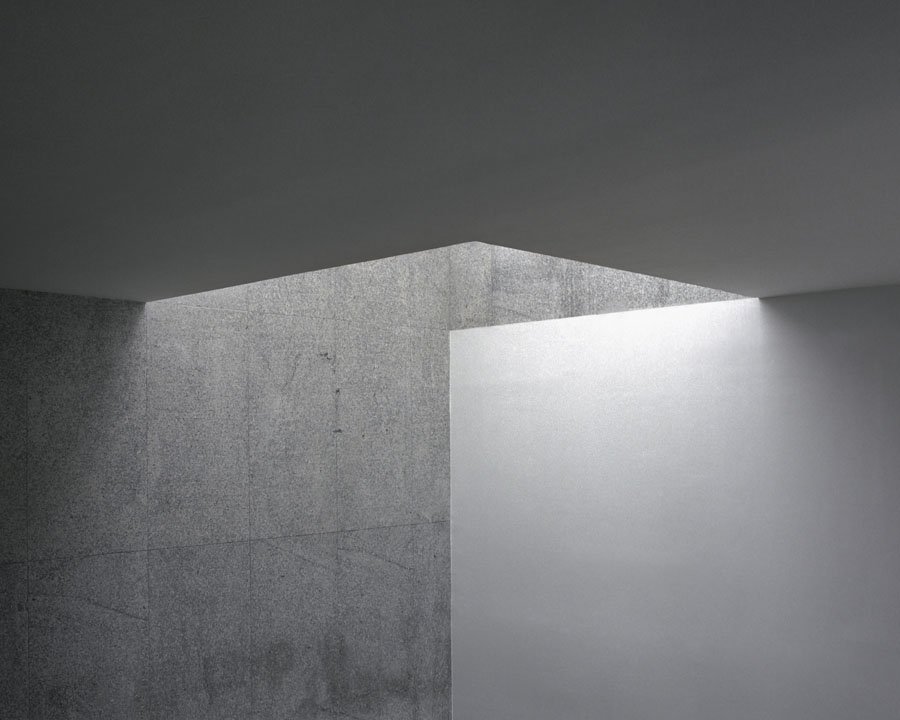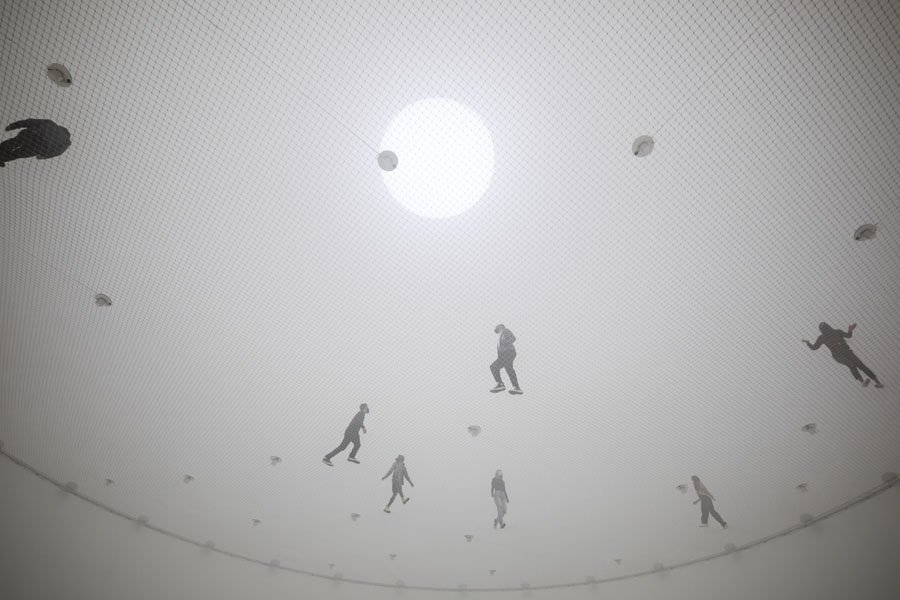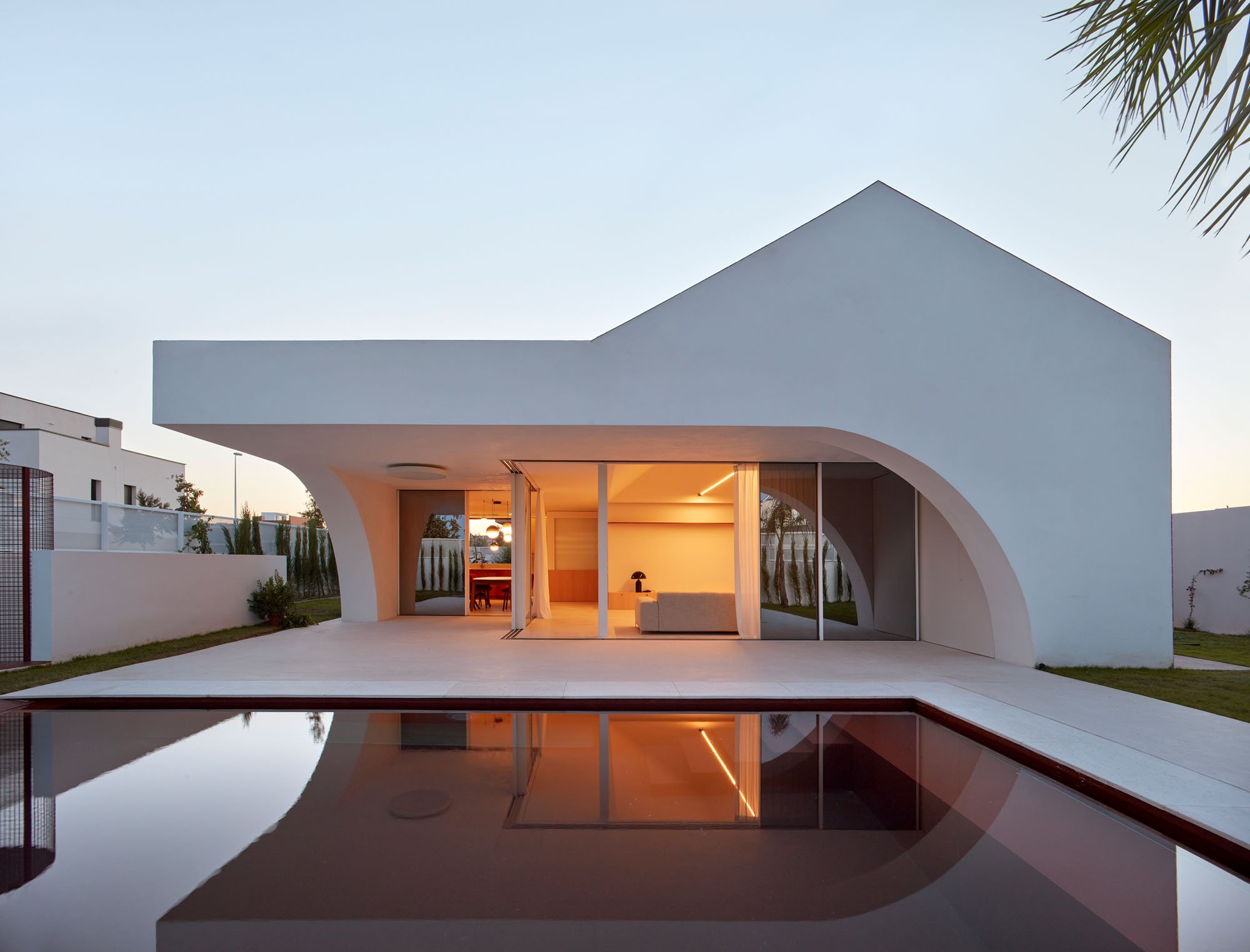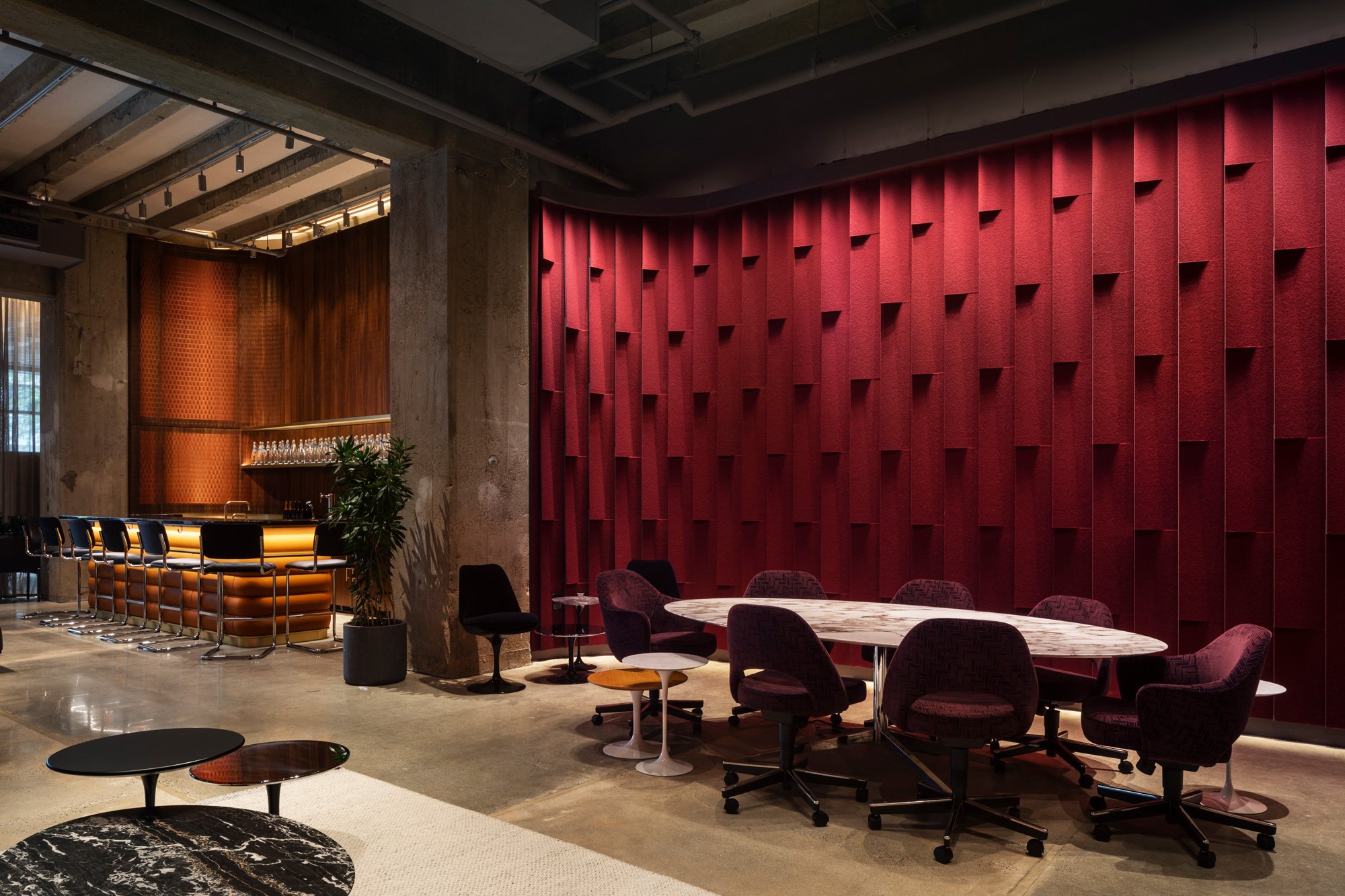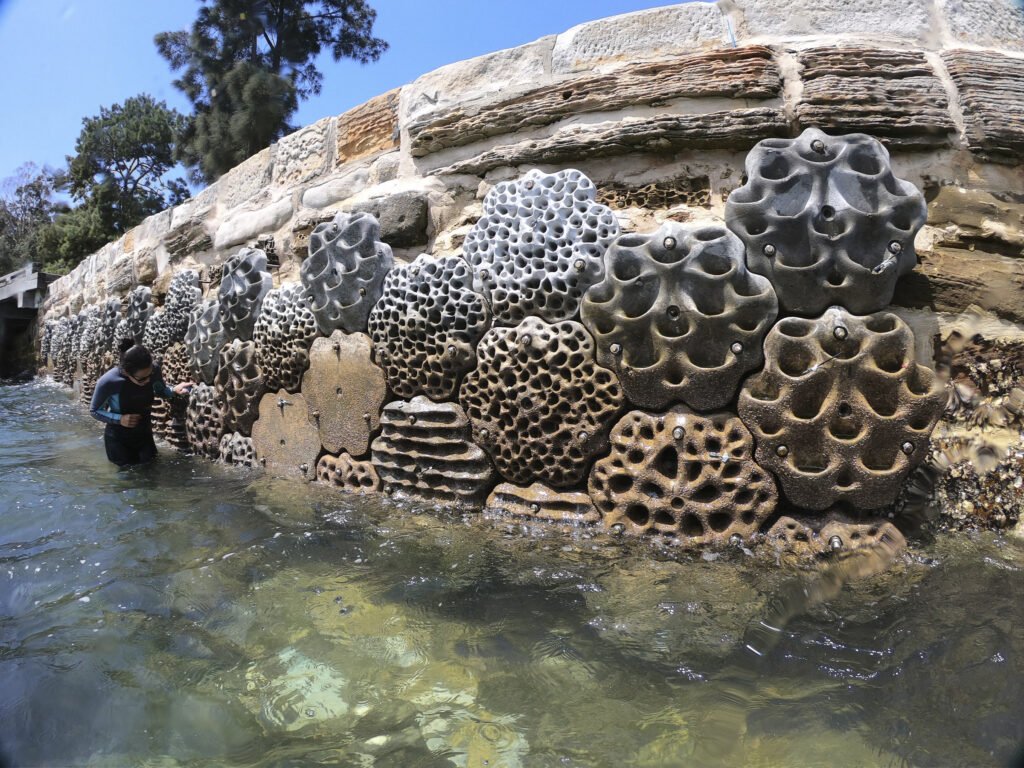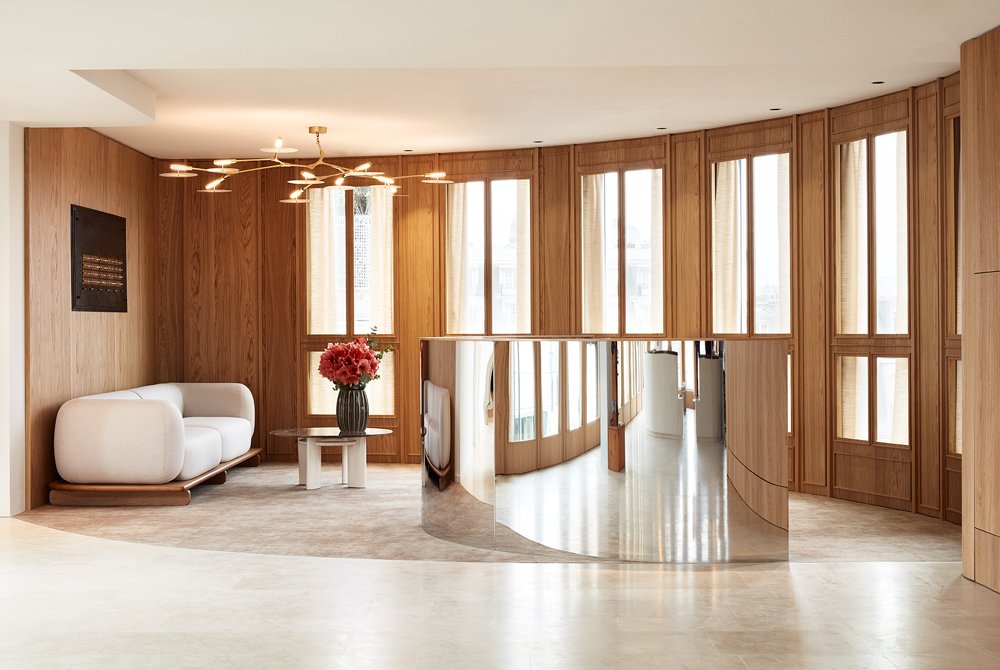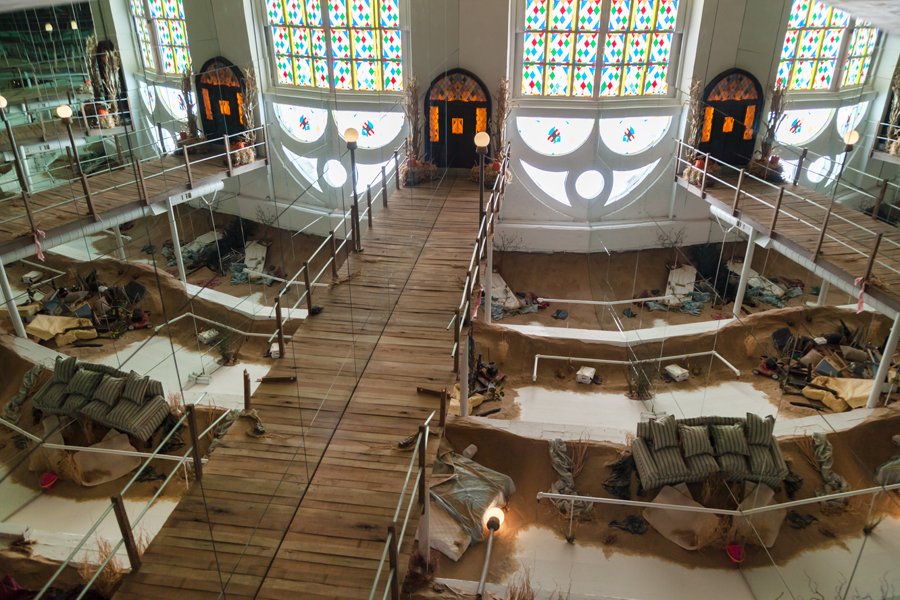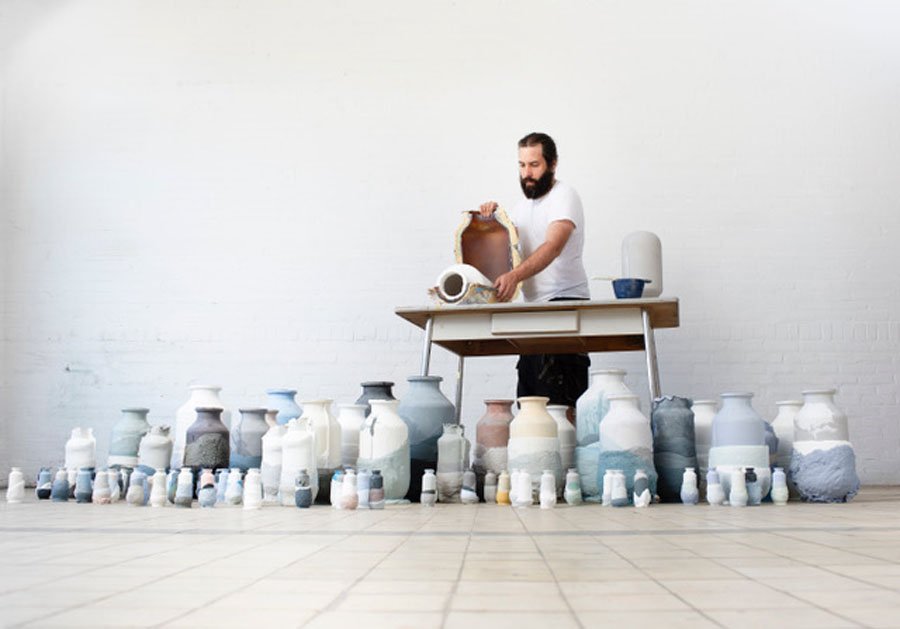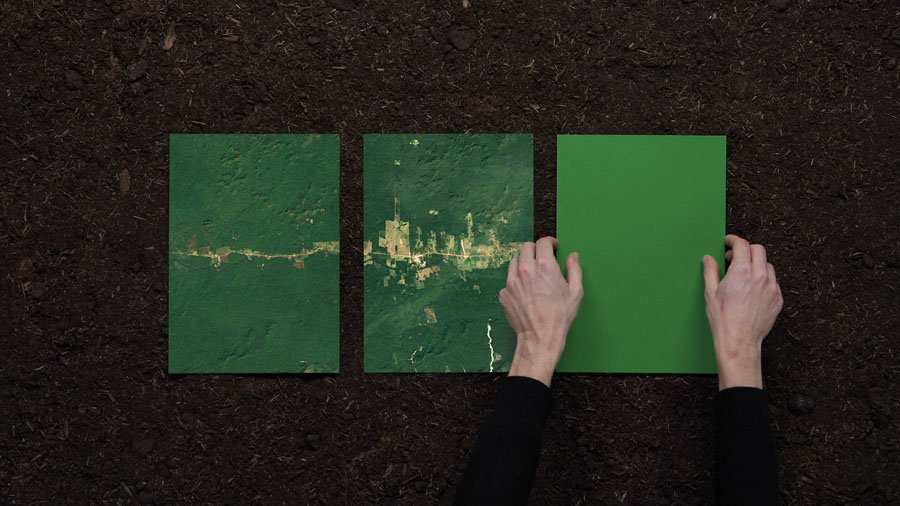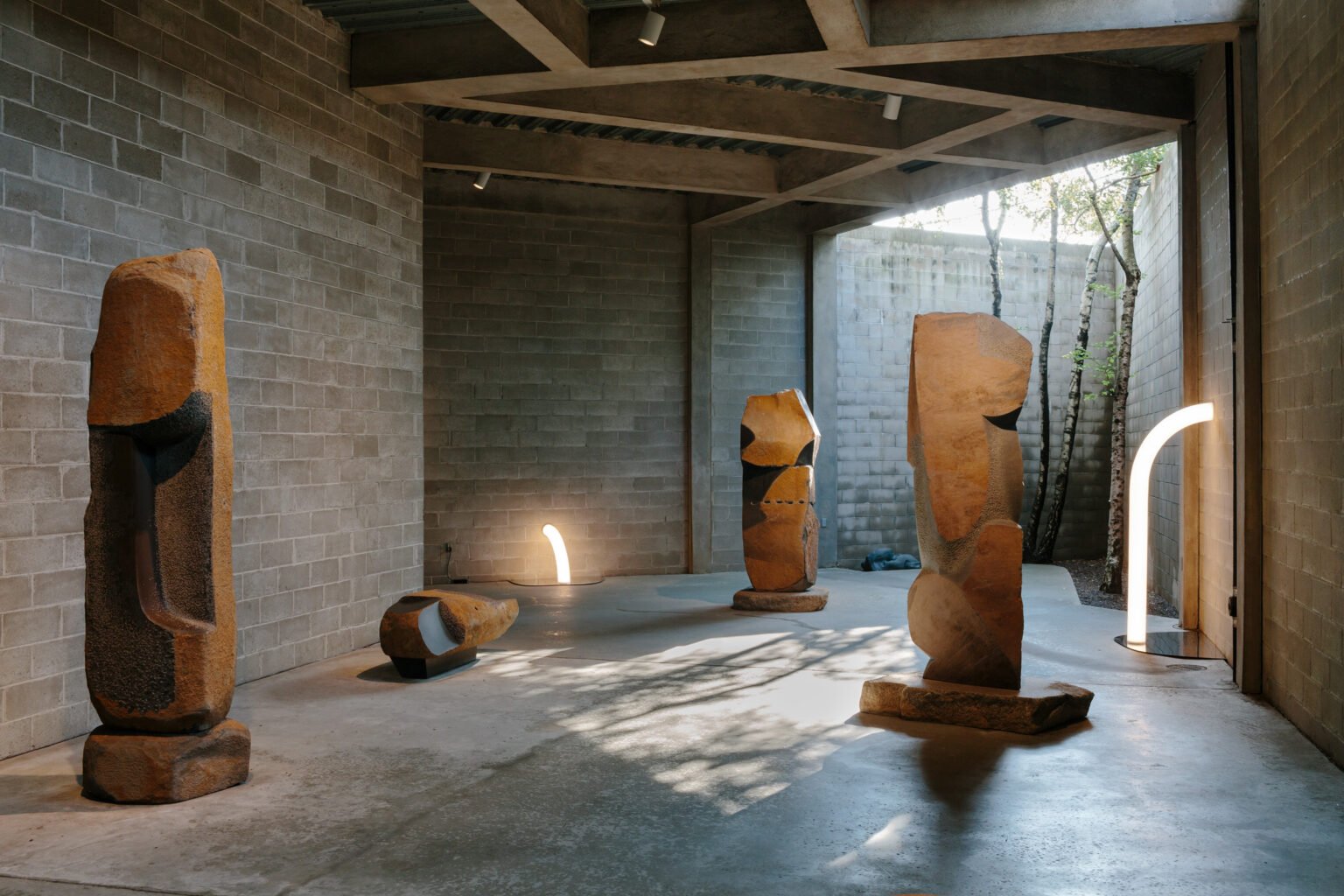
Objects of Common Interest Gets Up Close and Personal with Isamu Noguchi
The Noguchi Museum’s Hard, Soft, and All Lit Up with Nowhere to Go exhibition draws striking parallels between the contemporary studio and the influential master
Since the dawn of industrialization, people have struggled to differentiate art and design: what’s expressive, aesthetically pleasing compared to what is practical, and accessible. This never-ending quest seemed futile to Modernist polymath Isamu Noguchi. For him, finding the right, perfectly-distilled, and timeless shapes was essential in transcending such limiting distinctions. Sculpture, regardless of being a work of art, stage design, lamp, or piece of furniture, can be functional.
“I am not a designer,” Noguchi wrote in the Spring 1949 issue of The League Quarterly. “The word design implies catering to the quixotic fashion of the time. All my work, tables as well as sculptures, are conceived as fundamental problems of form that would best express human and aesthetic activity involved with these objects. The act of creating a fundamental form, though it may be disciplined by the fundamental nature of the object desired, is not designing in the accepted sense.”
New York and Athens-based studio Objects of Common Interest follows a similar philosophy. The architecturally-trained duo—Eleni Petaloti and Leonidas Trampoukis—describe their approach as creating objects and spaces that are moments of unfamiliar simplicity and abstract empirical tools of social function. Whether creating sculptures or furnishings, they’re untethered by categorization or fleeting trends. “We’re more interested in how forms, without overcomplicated decorative maneuvers, can have secondary layers of experience that are revealed through use: illusionary elements that appear solid but are actually soft,” says Petaloti “We like [to subvert] common notions of function and aesthetics.”
A new exhibition at The Noguchi Museum in Queens, New York intersperses key recent works by Objects of Common Interest throughout the institution’s vast permanent collection.
Read the article here.
A Floating Learning Center Is Inspired by a Salmon’s Eye
Architect Michael Hsu Fashions a Flexible Office out of an Austin Church
Meet the Design Practices Shaking Things Up in Mexico City
RBW Puts Down Roots in Kingston, New York
Maison & Objet Celebrates Independent Talent Navigating the New “Meta-Sensitive” World
Paris Design Week Put Purpose-Driven Newcomers Front and Center
Only If Architecture Designs a New Look for Brooklyn Infill
Dutch Designer Marjan van Aubel’s Solar Revolution
In Brooklyn’s Tallest Office Tower One Floor Offers a New Way to Work
A Bao Eatery in Valencia Turns the Nautical Theme on its Head
Central London’s Latest Office Block Redefines Adaptive Reuse
Orior Opens its SoHo Flagship with Nods to its Irish Roots
Green Design Makes a Strong Showing at Milan Design Week 2022
James Florio Wins the Julius Shulman Institute Excellence in Photography Award
Vitra Design Museum Explores Design’s Complicated Relationship with Plastic
Maison&Objet Returned in Full Force
Future100: Polina Kulikova Explores the Emotional and Social Dimensions of Architecture
For Multidisciplinary Designer Bradley Bowers, Design is Boundless
Sculptural Lighting Is Having a Moment
Columbia’s New Business School Favors Context and Well-Being Over Ostentation
A Tomás Saraceno Retrospective at The Shed Questions Human’s Relationship with Nature
50 Upcycled Wooden Chairs Are on Display at Copenhagen’s Connie-Connie Café
A Geometric Home Cuts an Impressive Figure in Coastal Spain
Stratasys Envisions The Future of Fashion Through Direct-to-Textile 3D Printing
Knoll Meets the Moment with a Resimercial Rebranding
David Benjamin’s Venice Biennale Installation Makes the Case for Probiotic Living
The Malin is a New York Co-Working Space for Design-Minded Members
Melbourne’s National Gallery of Victoria Samples the Future
Tarkett Calls on Note Design Studio to Outfit Its New Stockholm Showroom
Atelier NEA Builds an Intimate Home in a Secluded Paris Alleyway
Louis Denavaut Imbues a Parisian Tech Company’s HQ with Character and Poise
London Coworking Space Douglas House Packs a Gentle Punch
Art Finds a New Audience When the Exhibition Space is a Model Apartment
What Samara Golden’s Newest Installation Conveys about this Tumultuous Yearv
Q&A: Mariana Pestana Revisits Empathy at the 2020 Istanbul Design Biennial
Li Edelkoort’s Sweeping Survey of the Neo-Materialist Movement Leaves No Stone Unturned
Kvadrat Demonstrates the Versatility of its Febrik Range with Knit!, an Interactive Digital Exhibition
Formafantasma Seeks to Redefine What Ecology Means in Today’s Complex Design World
Paola Antonelli and Alice Rawsthorn’s Instagram Live Series Examines COVID-19 Designs
With Its Exhibition Add to the Cake, Foreign Legion Calls for Inclusion













